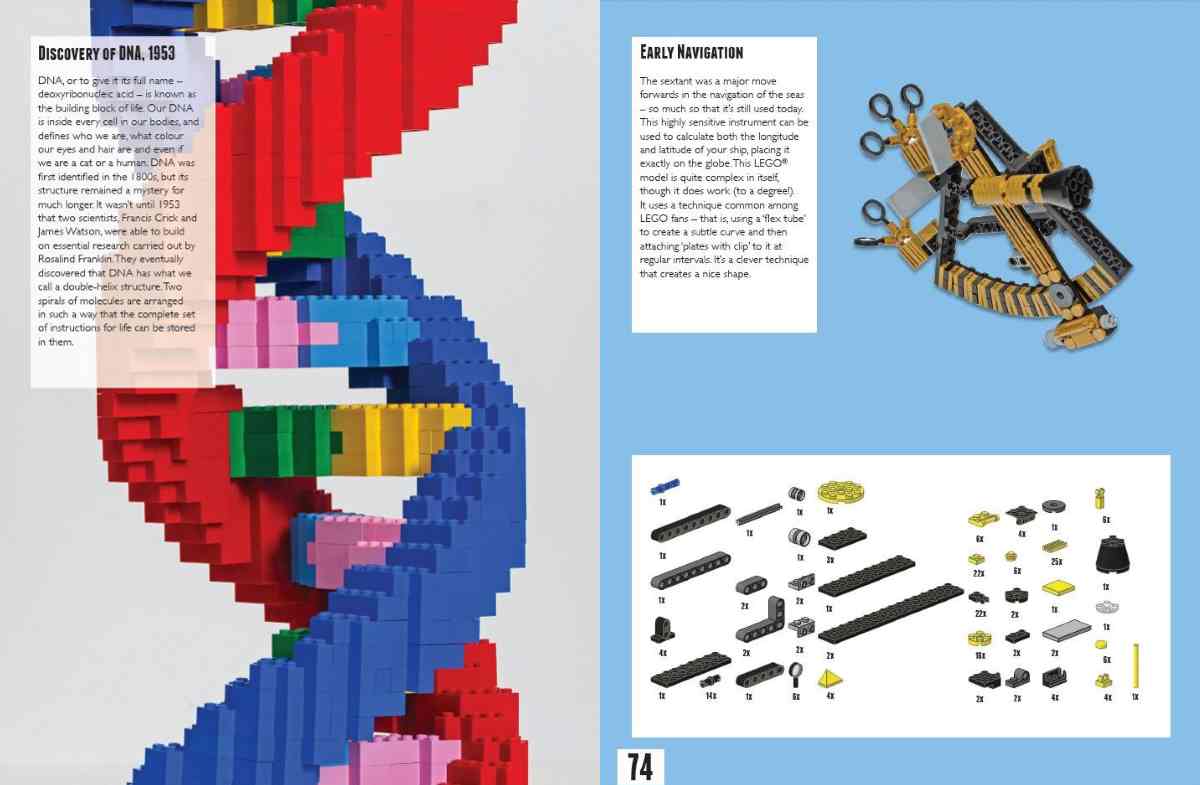
If I could be anybody in the world, then being Warren Elsmore would be pretty high up my list. Like many of us here at GeekDad, he’s passionate about LEGO. He’s channeled that passion into some of the finest Danish mini-brick constructions the world has seen. Along the way he’s produced several excellent books to inspire LEGO builders, young and old.
Elsmore’s latest book is Brick History. This is not a treatise on Mesopotamian mud pies, nor the clay banks of Victorian England. The book’s subtitle is “Amazing Historical Scenes to Build from LEGO.” Which pretty much tells you everything you need to know.
Published by the History Press, Brick History has a tough, glossy, flexible cover. It’s a softback, but durable. Inside, Elsmore has built scenes ranging from a 2D representation of the Big Bang, through the tumultuous events of world history, right up to… er… the wedding of Prince William and Kate Middleton. Whilst the final entry is perhaps not what I might have hoped (though the model of Westminster Abbey is amazing, and apparently 72 million people watched the wedding live, so what do I know?), other entries in the book are well chosen and certainly geek-inspired.
From a scientific perspective there are pages devoted to Copernicus discovering heliocentrism, Newton and gravity, the Smallpox vaccine, and Darwin and The Origin of Species. Moving forward in time, there’s the invention of the telephone, the Wright brothers, the theory of relativity, and the Apollo 11 Moon landing. And those are just a selection.
Brick History is heavily Anglo-US focused, especially in the “20th Century and Beyond” section, where “Mahatma Gandhi and Indian independence” is the only non Euro-US-based event. Scenes from the two World Wars are curiously absent, though the treaty of Versailles is represented. Of course there are countless historical events to pick, and a book cannot be infinitely long. Elsmore states in the introduction that he did not want Brick History to be a catalog of warfare, for which he is to be applauded. It’s churlish to comment on what isn’t in the book, so allow me to focus on what has made it.

Highlights include: the Battle of Thermopylae, Pompei and Vesuvius, and the Battle of Waterloo. From US history we have: the sailing of the Mayflower, the Boston Tea Party, the abolition of slavery, Martin Luther King’s “I have a dream” speech, and the inauguration of Barack Obama. Choice moments from Britain include: Ironbridge and the Industrial Revolution, the first underground train, and women’s suffrage. Other highlights are the release of the first ‘Talkie’ film, and the fall of the Berlin Wall.
Better though, than all the dioramas, are the build-it-yourself projects, of which there are over thirty, including a sextant, Viking shield, and a bacterium to mark the discovery of penicillin. LEGO-based homework submissions could well become regular occurrences with instructions included for the first clock, Gutenberg’s printing press, Bell’s telephone, and Marconi’s radio transmitter.
With Brick History, Elsmore has once again shown the power and versatility of LEGO and its ability to be fun and educational (I write this a week after my son was told by a substitute teacher that LEGO was for babies). Whilst not an essential purchase, the book is a delight for all LEGO fans, particularly, of course, for those with an interest in history. If you like Elsmore’s books then you’ll be pleased to know that Brick History is of the quality we’ve come to expect. If you’re new to them, then this is a great book; just don’t forget to check out his other offerings, including the excellent Brick City.
Disclosure: I received a review copy of Brick History.




